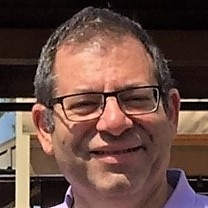Polymer Networks and Gels 2022
A special issue of Gels (ISSN 2310-2861). This special issue belongs to the section "Gel Chemistry and Physics".
Deadline for manuscript submissions: closed (21 October 2022) | Viewed by 12953
Special Issue Editors
Interests: polymers; hydrogels; drug delivery; biomedicine
Special Issues, Collections and Topics in MDPI journals
Interests: composition of polymers; controlled polymerizations; amphiphilic copolymer networks; coarse copolymers; microphase separation; degradable polymer networks; RNA and DNA yield
Special Issues, Collections and Topics in MDPI journals
Interests: simulation; modeling; polymers
Interests: to understand the fundamental principles that govern molecular interactions and define structural hierarchy in complex synthetic and biopolymer systems, such as biological tissues, gels, soft materials, self-assemblies and functional nanostructures; to develop multiscale characterization approaches by combining microscopic (small angle scattering, static and dynamic light scattering, atomic force microscopy, etc.) and macroscopic (osmotic pressure measurements, rheology, etc.) methods probing the static and dynamic properties of gels and polymer solutions over a broad range of length and time scales
Special Issues, Collections and Topics in MDPI journals
Special Issue Information
Dear Colleagues,
On the behalf of the Polymer Networks and Gels Group, I would like to announce a Special Issue collecting selected contributions from the Polymer Networks and Gels Conference, PNG, to be held in Rome between June 12 and 16, 2022. The conference is structured into five topics:
- Nano-, micro-, and macro-gels in biomedicine;
- Gels for cultural heritage;
- Gels in action: self-assembly, responsivity, and sensing;
- Networking methods and structure design;
- Network dynamics, mechanics and simulations;
- Miscellaneous.
The conference, usually biennial, has been delayed due to the pandemic; in 2022, after four years, researchers from all over the world will have the chance to meet again for a real confrontation of ideas and results. This Special Issue has the objective to fix the state of the art of the research focused on gels, highlighting the multidisciplinary approaches operating in this field. Let me add that PNG 2022 and the related Special Issue have a particular meaning and relevance in the gels scientific community and will mark the will to resume or continue the activities with a renewed enthusiasm. The planned paper submission deadline is September 30, 2022. For this event, open access publication costs will be discounted.
Prof. Dr. Gaio Paradossi
Prof. Dr. Costas S. Patrickios
Prof. Dr. Ester Chiessi
Prof. Dr. Ferenc Horkay
Guest Editors
Manuscript Submission Information
Manuscripts should be submitted online at www.mdpi.com by registering and logging in to this website. Once you are registered, click here to go to the submission form. Manuscripts can be submitted until the deadline. All submissions that pass pre-check are peer-reviewed. Accepted papers will be published continuously in the journal (as soon as accepted) and will be listed together on the special issue website. Research articles, review articles as well as short communications are invited. For planned papers, a title and short abstract (about 100 words) can be sent to the Editorial Office for announcement on this website.
Submitted manuscripts should not have been published previously, nor be under consideration for publication elsewhere (except conference proceedings papers). All manuscripts are thoroughly refereed through a single-blind peer-review process. A guide for authors and other relevant information for submission of manuscripts is available on the Instructions for Authors page. Gels is an international peer-reviewed open access monthly journal published by MDPI.
Please visit the Instructions for Authors page before submitting a manuscript. The Article Processing Charge (APC) for publication in this open access journal is 2600 CHF (Swiss Francs). Submitted papers should be well formatted and use good English. Authors may use MDPI's English editing service prior to publication or during author revisions.
Keywords
- networks
- gels
- hydrogels
- polymers
- biomaterials
- soft matter








